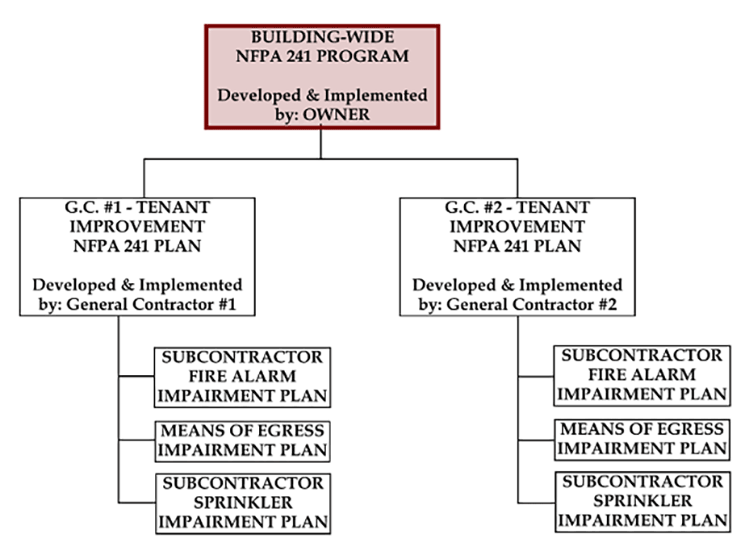With Massachusetts’ recent adoption of NFPA 1 as part of the new State Fire Code, each construction project a specific NFPA 241 Construction Fire Safety Program. The owner, general contractor(s), and the subcontractors each play an integral role in demonstrating compliance; from proper documentation to collaborative implementation.
NFPA 241 Section 7.2 outlines the owner’s responsibility for fire protection in a building under construction; “The owner shall designate a person who shall be responsible for the fire prevention program and who shall ensure that it is carried out to completion…The fire prevention program manager shall have the authority to enforce the provisions of this and other applicable fire protection standards.” As such, building owners should minimally be responsible for the following:
- Assign Fire Protection Program Manager (FPPM) and Alternate
This individual will be responsible for the enforcement and implementation of the building/campus NFPA 241 Plan and serve as the point of contact for any first responders. - Develop, Manage, and Implement Master Building/Campus NFPA 241 Program
Provides baseline approach to fire protection and life safety for building. This is used/referenced by current and future construction projects. Depending on complexity, assistance from a fire consultant may be necessary. - Confirm General Contractors and their Subcontractors are developing/implementing their respective Project Level NFPA 241 Plans and Impairment Plans.
- Coordinate all impairments on site.
- Property Maintenance
- Fire alarm / Fire Protection / Secondary Power
- *Smoke Control (most commonly overlooked)
- Semi-annual testing / Maintenance schedule available on site / Proof of performance and functional criteria are satisfied.
- Fire Drills / Evacuation Plans
General Contractor’s Role
All GC’s working in the building will be required to issue an independent, Project-Level NFPA 241 Plan for each individual project. Said Plan should reference and incorporate the policies and procedures included in this Program, while speaking to specific fire protection, life safety, and safeguards that are appropriate for the scope of work at hand.

